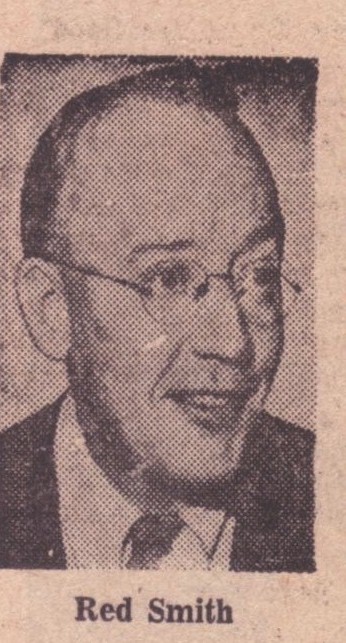
The Fishpole Factory
by RED SMITH
MANCHESTER, Vt . The sign on the white frame building reads, "C.T. Orvis Co., Fishing Tackle," and this is where it started 113 years ago when Charles Orvis—"a feisty little man with a Vandyke beard," said Dick Finlay—set out to help men prove themselves smarter than trout. They're still trying.
Dick Finlay, vice president, was conducting visitors through one of the few plants left in the world where artisans still work at the "ticklish business of building fine flyrods. A visitor can see it all in about 45 minutes, but it takes a stick of Tonkin cane six weeks to go through the 20 pairs of hands that will convert it into an instrument for presenting a fly at the head of a riffle.
Tonkin cane, the only bamboo suitable for quality rods, comes from a tiny mountain area in Communist China, which means it hasn't been shipped directly to the United States in years. It used to arrive in rattan-wrapped bundles of 100 sticks, one-third of which would be discarded for various defects before the remainder went into a bin in the basement here.
There's still a supply in the bin, all imported before the Korean conflict, and in an adjacent bin is newer stuff that was shipped from China to Europe and split into triangular strips there. That work made it a European product that could be legally brought to the United States.
Six Old Drunks
A woman seated near the bins was running halved sticks through a gas flame to dry them out. She heard Finlay explain that even though the bamboo had been aged for many years it still retained moisture, and she lifted a stick to show how the heat was bringing out bubbles of sap.
At a power saw a few steps away a man was splitting the dried cane into triangular strips about a quarter-inch thick. They came off long and limber but, the sawyer said, "They're like old drunks; six of 'em together hold each other up."
From the saw the strips go to a milling machine designed by Wes Jordan when he was with the South Bend Bait Co. before he became Orvis's foreman. When South Bend stopped making bamboo rods, Jordan went out and found his machine in the basement. It is a 12-foot tangle of cams and cogs and gears and gadgets and grommets and gismos that would give Rube Goldberg the vapors; it even has little wheels with tires made of rubber from surgical bandages.
Next is a machine called a flatbed miller that shaves the bamboo down to size within 1/1000th of an inch of specification. The machine has a bed of rock maple that swells on a rainy weekend and must be returned on Monday. Thus refined, six strips are fitted together to make a rod section, bathed in a phenolic resin glue that can't be removed from anything, and tied with shoemaker's thread on a machine that makes a spiral binding from left to right, then back from right to left.
Hot Dogs and Beans
Now the cane goes into the ovens for heat-tempering. Jim Payne, the great rod maker of Highland Mills, N.Y., never would reveal the temperature or time for cooking his bamboo but Highland Mills housewives always brought their bean pots around because his oven was exactly right for baking beans. "We've got a small oven upstairs," Dick Finlay said, "that we use for hot dogs sometimes."
After cooking, when the bindings have been removed and all excess glue filed off, the rod sections are impregnated by Wes Jordan's secret formula. This consists of a week-long bath in a mixture of water and phenolic resin that makes the bamboo diamond-hard.
Then it's back in the oven and on to a shop where everything is put together. All metal parts—the locking reel seat, the ferrules, and guides—are made here in the machine shop. Walnut dowels are shaped for the base of the reel seat, cork handles are fashioned and pulp removed from the pores with a jackknife.
The rod is given a final straightening over dry heat; it is sanded down and down and down with finer and finer paper; the butt, tip guide and ferrules are fitted and the ferrules are buffed to a high shine, then darkened and dulled by oxidization. (Thus do umpires rub a mud from New Jersey's Rancocas Creek on new baseballs to remove the factory gloss.)
No Shakes
Abstemious ladies innocent of the morning-after shakes apply silk windings which fasten on the chromium-treated guides of stainless steel and four coats of spar varnish glue the windings tight.
"Don't you ever overlap just one turn with that thread?" a visitor asked a lady twirling a rod tip between practiced fingers.
"Once in a while," she said.
"Like around four p.m. Friday after a hard week?"
The lady shrugged. "We all have our bad days."
No fisherman lie, the visitor shuddered. "All this work to kill a fish," he said. "Wouldn't dynamite be quicker?"
-- Dr. Todd
1 comment:
Damn. That is good writing.
stickleyboy
Post a Comment